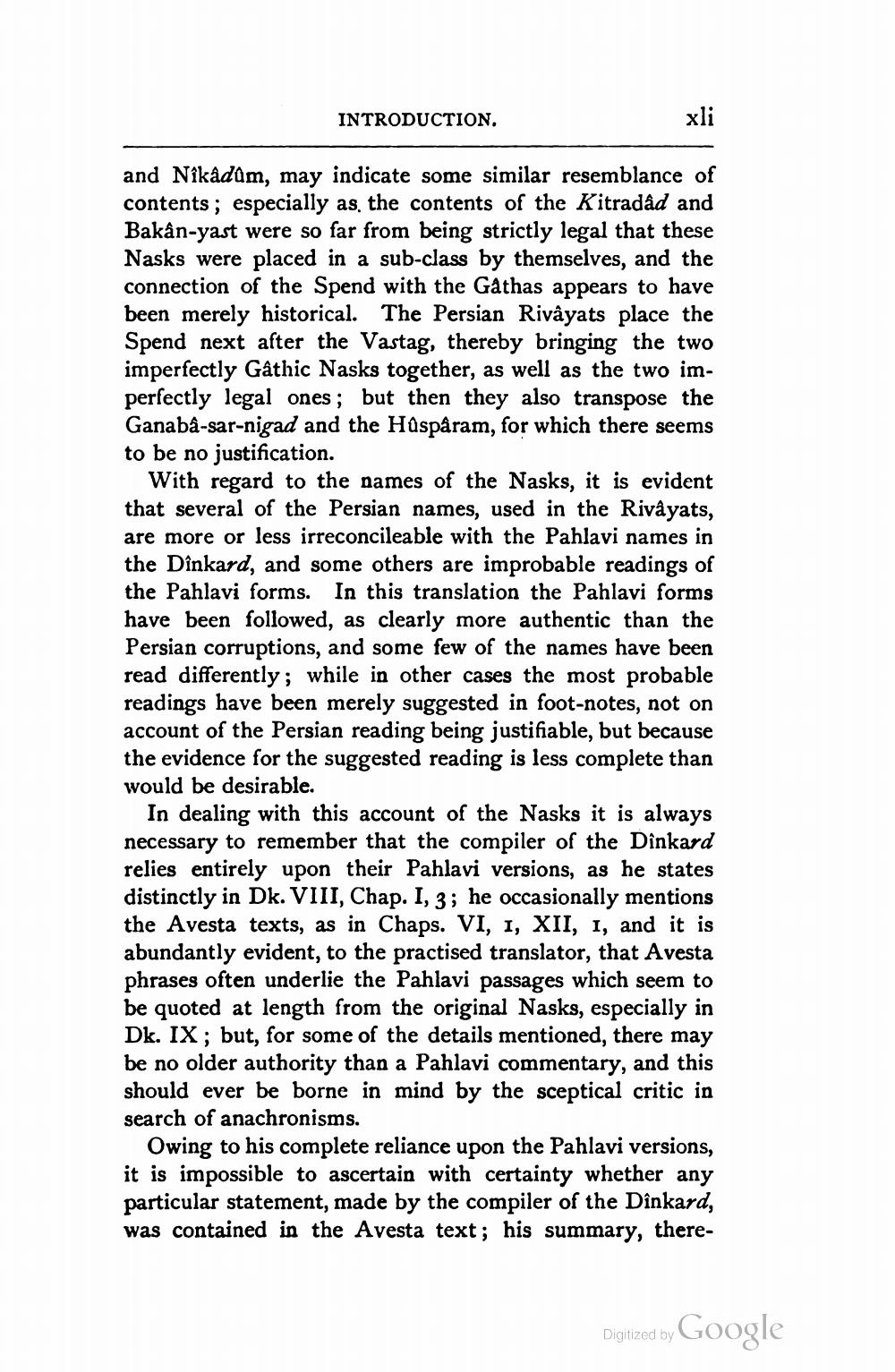________________
INTRODUCTION.
xli
and Nikâdûm, may indicate some similar resemblance of contents; especially as the contents of the Kitradâd and Bakan-yast were so far from being strictly legal that these Nasks were placed in a sub-class by themselves, and the connection of the Spend with the Gathas appears to have been merely historical. The Persian Rivậyats place the Spend next after the Vastag, thereby bringing the two imperfectly Gathic Nasks together, as well as the two imperfectly legal ones; but then they also transpose the Ganabâ-sar-nigad and the Hûspâram, for which there seems to be no justification.
With regard to the names of the Nasks, it is evident that several of the Persian names, used in the Rivậyats, are more or less irreconcileable with the Pahlavi names in the Dînkard, and some others are improbable readings of the Pahlavi forms. In this translation the Pahlavi forms have been followed, as clearly more authentic than the Persian corruptions, and some few of the names have been read differently; while in other cases the most probable readings have been merely suggested in foot-notes, not on account of the Persian reading being justifiable, but because the evidence for the suggested reading is less complete than would be desirable.
In dealing with this account of the Nasks it is always necessary to remember that the compiler of the Dînkard relies entirely upon their Pahlavi versions, as he states distinctly in Dk. VIII, Chap. I, 3; he occasionally mentions the Avesta texts, as in Chaps. VI, I, XII, I, and it is abundantly evident, to the practised translator, that Avesta phrases often underlie the Pahlavi passages which seem to be quoted at length from the original Nasks, especially in Dk. IX; but, for some of the details mentioned, there may be no older authority than a Pahlavi commentary, and this should ever be borne in mind by the sceptical critic in search of anachronisms.
Owing to his complete reliance upon the Pahlavi versions, it is impossible to ascertain with certainty whether any particular statement, made by the compiler of the Dinkard, was contained in the Avesta text; his summary, there
Digitized by Google




